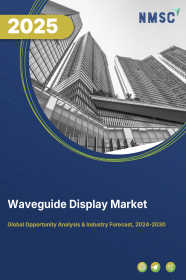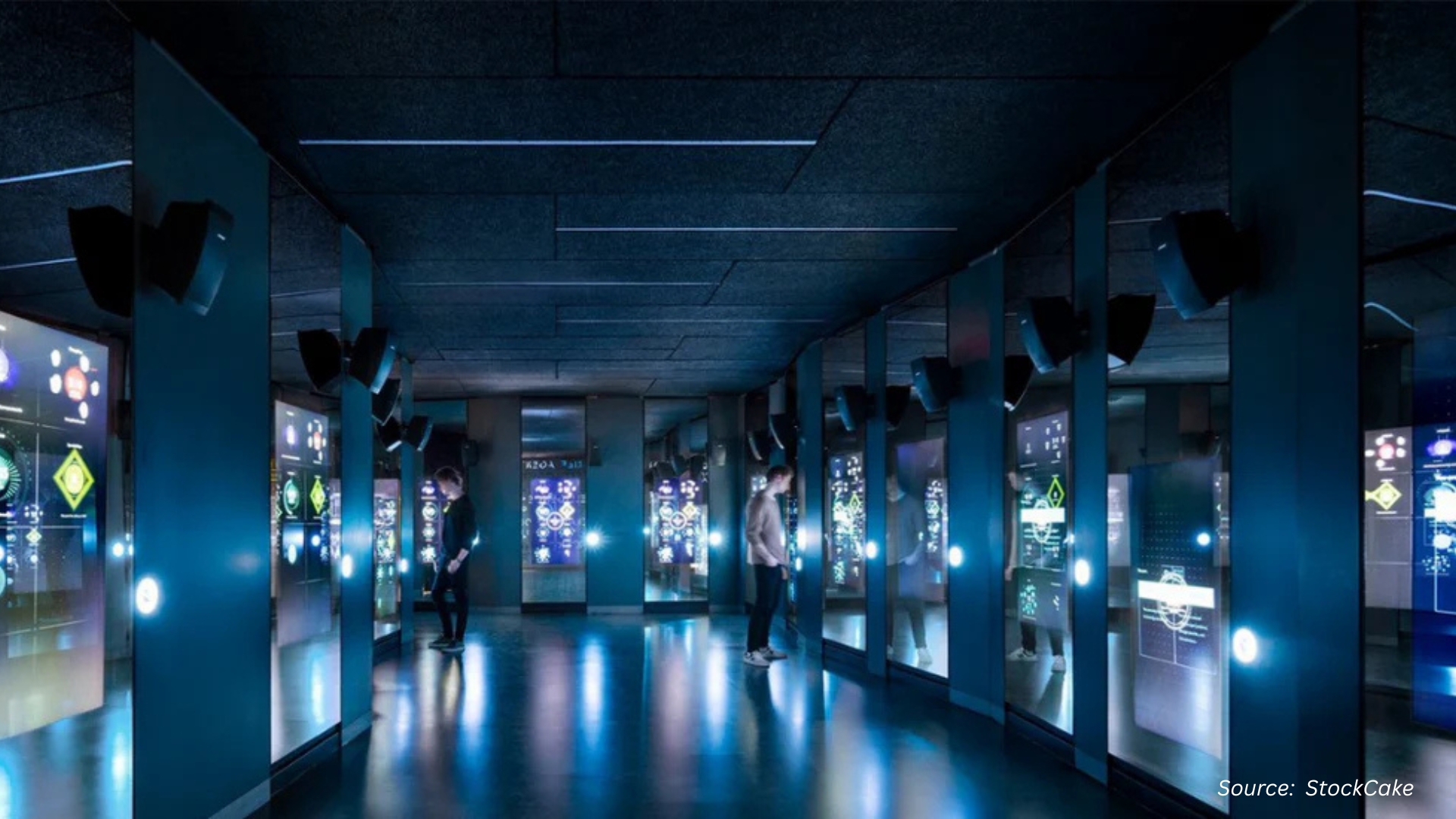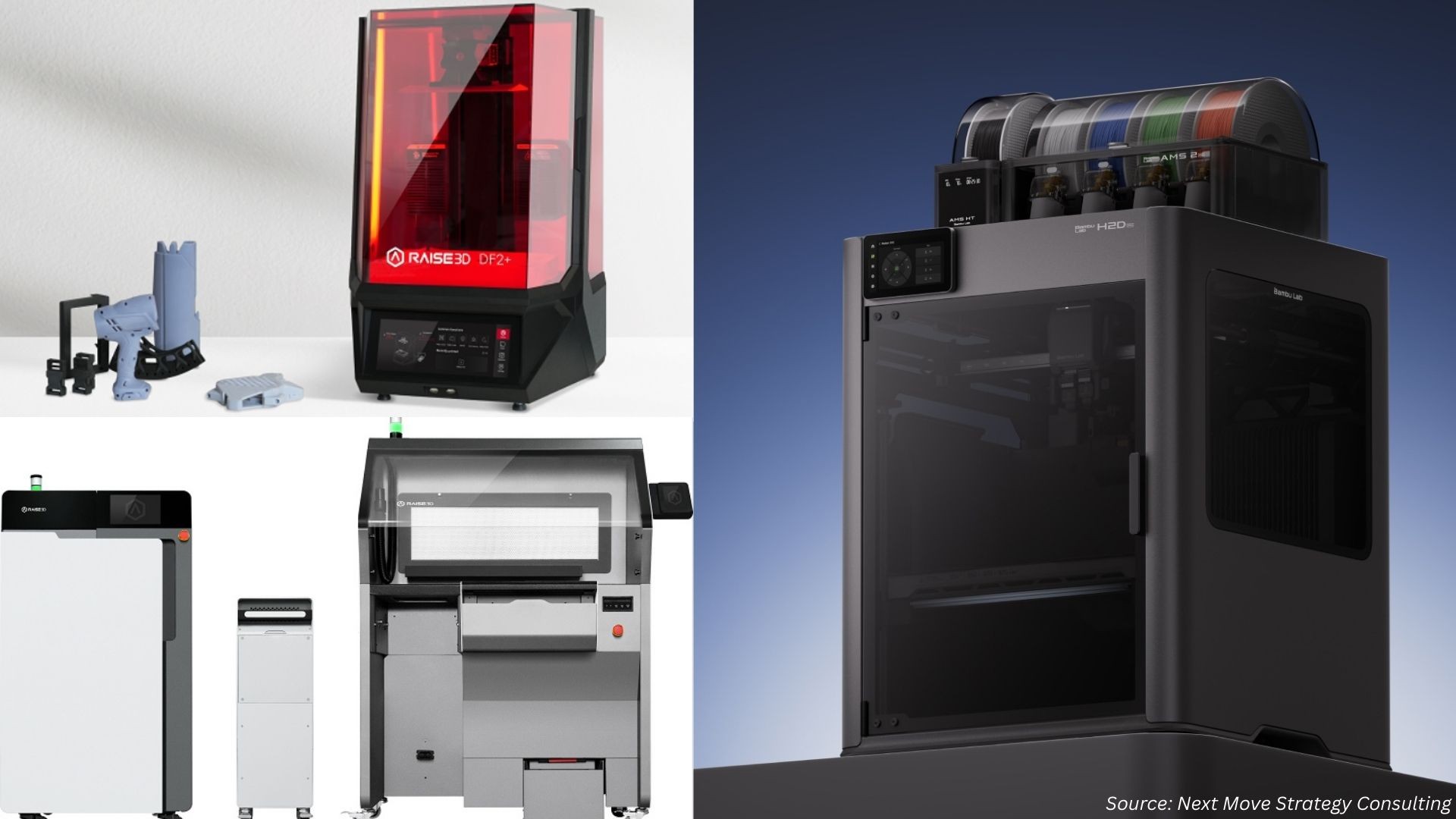
Waveguide Display Market by Type (Channel Waveguide and Planar Waveguide), by Material Type (Electro-Optic Waveguide, Silicon Waveguide, Semiconductor Waveguide, Glass Waveguide, Polymer Waveguide, and Others), by Fabrication Process (Lithography Method, Microreplication Method, and Photo-Address Method) – Global Opportunity Analysis and Industry Forecast 2023-2030
Market Definition
The Waveguide Display Market size was valued at USD 10.43 billion in 2022 and is predicted to reach USD 21.47 billion by 2030 with a CAGR of 9.5% from 2023-2030. A waveguide display is a type of display technology used in augmented reality (AR) devices. It consists of a transparent optical waveguide that directs light from a display source, such as a micro-display or projector, into the user's field of view. The waveguide guides the light through total internal reflection, creating virtual images that appear as overlays on the real-world environment, allowing users to see and interact with digital content while maintaining awareness of their surroundings. Waveguide displays offer a compact and lightweight form factor, making them suitable for integration into wearable AR devices such as smart glasses.
Market Dynamics and Trends
The increasing demand for high-end display solutions such as virtual reality (VR), augmented reality (AR), and holographic displays are driving the growth of the waveguide display market. Waveguide displays provide a more realistic and immersive experience than traditional display solutions, boosting the demand for waveguide displays. Moreover, advancements in waveguide display technology, including improved optics, miniaturization, and enhanced image quality, leading to the production of more compact and lightweight waveguide displays is further driving the growth of the market.
Furthermore, the growing investments in research & development in the field of waveguide display technology to further enhance the performance, affordability, and scalability of waveguide displays is further boosting the growth of the market. For instance, in November 2021 Dispelix, an AR waveguide display manufacturing company, invested USD 33 million to accelerate the development and commercialization of its waveguide display technology. The investment support Dispelix in was aimed toward meeting the growing demand for AR solutions across industries such as gaming, healthcare, and manufacturing.
However, the high installation cost of manufacturing and installation of waveguide display systems is the major factor restraining the growth of the waveguide display market. On the contrary, the introduction of holographic technology and the use of metamaterials for the creation of true 3D images and holograms while metamaterials bring thinner and more lightweight displays with energy efficiency in the waveguide display system will create ample opportunities in the coming years for the waveguide display market.
Market Segmentations and Scope of the Study
The waveguide display market share is segmented on the basis of type, material type, fabrication process, optical interconnection, application, and geography. On the basis of type, the market is divided into channel waveguide and planar waveguide. On the basis of material type, the market is classified into the electro-optic waveguide, silicon waveguide, semiconductor waveguide, glass waveguide, polymer waveguide, and others. On the basis of the fabrication process, the market is segmented into the lithography method, microreplication method, and photo-address method. On the basis of optical interconnection, the market is divided into board-to-board optical interconnection, optical backplane, on-chip optical interconnection, interboard, chip-to-chip optical interconnection, and others. On the basis of application, the market is classified into inspection devices, high-performance server, printers, aircraft, automobiles, smartphones & tablets, super-high vision, medical equipment, computing, router, and othersGeographic breakdown and analysis of each of the aforesaid segments include regions comprising of North America, Europe, Asia-Pacific, and RoW.
Geographical Analysis
Asia Pacific holds the lion share of waveguide display market and is expected to continue its dominance during the forecast period. This is attributed to factors such as the growing gaming & entertainment industry in the Asia-Pacific region and a thriving market for gaming products, there is a surging demand for advanced waveguide displays to deliver immersive and high-quality visual experiences to enhance gaming experiences. According to the recent report by the International Trade Administration, the gaming industry in China generated a revenue of USD 32 billion in 2020, driven by the increasing demand for immersive gaming experiences, including the adoption of waveguide displays.
Moreover, the growing consumer electronic industries driven by the increasing demand for AR/VR glasses is further boosting the growth of the waveguide display market in this region. According to the State Council Information Office of the People's republic of China, China’s consumer electronics manufacturing output reached USD 4.6 trillion as it accounting for 30% of global manufacturing output in 2021.
On the other hand, North America is expected to show a steady rise in the waveguide display market. This is due to the increasing investment in AR/VR technology by major companies for research and development in waveguide display technology for high-quality AR/VR devices. For instance, in December 2020, Apple Inc announced to invest in the research and development of waveguide technology to reduce the weight of their upcoming AR headset. By focusing on optimizing the waveguide display system, Apple aims to create a lightweight and comfortable AR headset for users.
Moreover, the presence of key players such as Corning Incorporated and Finisar Corporation plays an important role in the development of the waveguide display market in North America. For instance, in January 2022, Corning Incorporated expanded its high-index glass portfolio with the aim of accelerating the widespread adoption of augmented reality (AR) technology. This strategic move provides manufacturers with advanced materials that enable the creation of compact and high-performance waveguide displays, paving the way for enhanced AR experiences.
Competitive Landscape
Various market players operating in the waveguide display market include Beneq Oy, Dispelix, Lumus Ltd., Wave Optics Ltd., Sumitomo Electric Industries, Ltd., Quantic Corry, FormFactor, DigiLens Inc., TriLite Technologies GmbH, VividQ, and Others. These market players are adopting various strategies such as product launches and collaborations to remain dominant in the waveguide display market.
For instance, in January 2023, Lumus launched the next generation 2D waveguide display 'Z-Lens'. The new 2D Maximus lens enables the development of smaller, lighter AR eyeglasses with high-resolution image quality, outdoor-compatible brightness, and seamless Rx integration.
Moreover, in January 2023, TCL Technology launched TCL RayNeo X2 augmented reality (AR) smart glasses, making a significant impact in the waveguide display market. The new AR glasses feature a stylish appearance with powerful features like smart navigation, auto-translation, photography, and music play.
Furthermore, in September 2022, Focally Private Limited collaborated with USound to launch its first generation of Universe AR glasses. The new Universe AR glasses feature AR navigation, geo-location-based applications, streaming videos and audio, Geo-location-based gaming, AI applications, and more in a fully transparent see-through waveguide display.
Key Benefits
-
The waveguide display market report provides the quantitative analysis of the current market and estimations from 2023 to 2030. This analysis assists in identifying the prevailing market opportunities to capitalize on.
-
The study comprises of a detailed analysis of the waveguide display market trends including the current and future trends for depicting the prevalent investment pockets in the market.
-
The information related to key drivers, restraints, and opportunities and their impact on the waveguide display market is provided in the report.
-
The competitive analysis of the market players along with their market share in the waveguide display market is mentioned.
-
The SWOT analysis and Porter’s Five Forces model are elaborated in the study.
-
The value chain analysis in the market study provides a clear picture of the stakeholders’ roles.
Key Market Segments
By Type
-
Channel Waveguide
-
Planar Waveguide
By Material Type
-
Electro-Optic Waveguide
-
Silicon Waveguide
-
Semiconductor Waveguide
-
Glass Waveguide
-
Polymer Waveguide
-
Others
By Fabrication Process
-
Lithography Method
-
Microreplication Method
-
Photo-Address Method
By Optical Interconnection
-
Board-to-Board Optical Interconnection
-
Optical Backplane
-
On-Chip Optical Interconnection
-
Interboard
-
Chip-to-Chip Optical Interconnection
-
Others
By Application
-
Inspection Devices
-
High-performance Server
-
Printers
-
Aircraft
-
Automobiles
-
Smartphones & Tablets
-
Super-High Vision
-
Medical Equipment
-
Computing
-
Router
-
Others
By Region
-
North America
-
U.S
-
Canada
-
Mexico
-
-
Europe
-
UK
-
Germany
-
France
-
Italy
-
Spain
-
Denmark
-
Netherlands
-
Finland
-
Sweden
-
Norway
-
Russia
-
Rest of Europe
-
-
Asia-Pacific
-
China
-
Japan
-
India
-
South Korea
-
Australia
-
Indonesia
-
Singapore
-
Taiwan
-
Thailand
-
Rest of Asia-Pacific
-
-
RoW
-
Latin America
-
Middle East
-
Africa
-
Key Market Players
-
Beneq Oy
-
Dispelix
-
Lumus Ltd.
-
Wave Optics Ltd.
-
Sumitomo Electric Industries, Ltd.
-
Quantic Corry
-
FormFactor
-
DigiLens Inc.
-
TriLite Technologies GmbH
-
VividQ




















 Speak to Our Analyst
Speak to Our Analyst

























